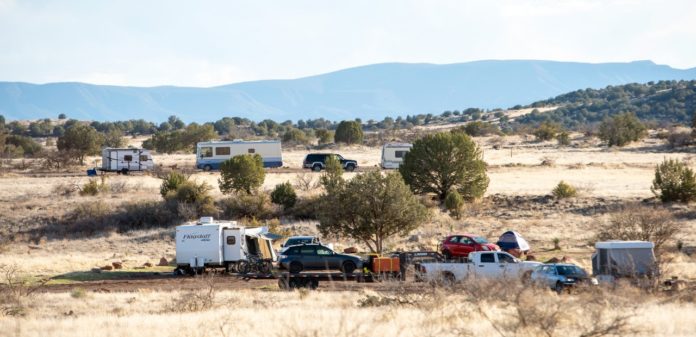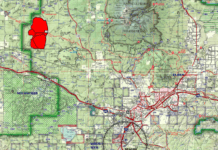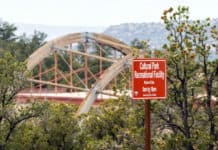
Across numerous recent editions we have covered the growing problem of long-term camping and recreational use along the U.S. Forest Service roads west of the city on the north side of State Route 89A between Sedona and Cottonwood.
There have always been recreational vehicles and campers on these public lands, but the COVID-19 pandemic spiked usage, some by people fleeing cities to take advantage of “extreme social distancing” — as it were — to stay safe, while others from Southwestern states who could not take their annual vacations across the country or the world grabbed their recreational vehicle, or camper van or just a tent and supplies, and took refuge in the wilderness outside Sedona.
Under current rules and with present law enforcement understaffing, very little is likely to change.
The U.S. Forest Service’s budget has routinely been reshifted from law enforcement and public service to forest fire mitigation, to the point where firefighting costs greatly exceed the rest of the USFS budget. In 1995, 58% of the USFS budget was allocated to the National Forest System, 16% to wildland fire management, 8% each to both capital improvements and research of forests and rangeland, 7% to state and private forestry and 3% to land acquisition.
By 2015, wildland fire management had ballooned to 52%, cutting the National Forest System down to 29% and cutting the other appropriations from a combined 26% to 19%.
While the overall budget for the USFS has remained steady with wildfire costs added on top of that, staffing levels have not reflected that. In 1995, the USFS employed just over 18,500 forest rangers, law enforcement personnel, scientists and support personnel and just over 5,000 wildfire personnel.
In 2015, rangers had been cut to just over 10,000 while firefighters increased to 12,000.
After brutal years fighting millions of acres of wildfires in Oregon and California, including the deaths of 43 people, the budget for fighting wildfires in the 2020-21 fiscal year is around 67% of the USFS budget.
Wildfires aside, this means that there are fewer forest rangers and those workers are less likely to check campsites daily or weekly to make sure recreationists aren’t overstaying their 14-day maximum stay on Forest Service land.
Many long-term campers can manage to circumvent this rule by moving their campsite to elsewhere on the forest. Because we are near the Prescott National Forest, and not that far from both the Tonto and Kaibab forests as well, recreationists in our area can cross the boundary lines and find open space, though not much in the Prescott National Forest area around State Route 260, which is currently closed to camping for several years.
But they can climb over Mingus Mountain to other campsites on the Prescott side, then come back when their 14-day period expires again.
By definition and law, Forest Service land begin belongs to the people. Our forest land belongs just as equally to us as it does to someone from Bicknell, Ind., or Madawaska, Maine, or Neah Bay, Wash., so anyone who obeys the laws can legally camp here, even if they bend what we would consider common courtesy to share the land without abusing or overusing it.
The other major issue are all-terrain vehicles, both privately owned and rentals, tearing up the lands west of Sedona in the Forest Road 525 area.
Those gravel, dirt and rough roads are not really designed for high speed vehicles, rather slow speed routes for drivers to reach their destination. So constant high speed use overtaxes the roads’ ability to endure the regular wear and tear they were not designed for.
ATV rental companies can advise renters about the rules of both road use and speed limits, but if renters sign waivers or agreements then violate them on the forest, there really isn’t much owners can do unless renters are caught in the act breaking the law. But USFS law enforcement is facing the same budget issues as rangers regarding fires. Additionally, the vast 2,900-square-mile Coconino National Forest is far harder to police than say the 19.07-square-mile Sedona.
We can help by aiming to reduce fire risks on USFS and pushing federal lawmakers to increase budgets for the USFS beyond just more fire mitigation and for state lawmakers to increase funds for county and state law enforcement to help rangers police these public lands.
Christopher Fox Graham
Managing Editor





















